Topics in the Theory of Riemann Surfaces Robert D.M. AccolaThe book's main concern is automorphisms of Riemann surfaces, giving a foundational treatment from the point of view of Galois coverings, and treating the problem of the largest automorphism group for a Riemann surface of a given genus. In addition, the extent to which fixed points of automorphisms are generalized Weierstrass points is considered. The extremely useful inequality of Castelnuovo- Severi is also treated. While the methods are elementary, much of the material does not appear in the current texts on Riemann surfaces, algebraic curves. The book is accessible to a reader who has had an introductory course on the theory of Riemann surfaces or algebraic curves.Computational Approach to Riemann Surfaces Alexander I. Bobenko, Christian KleinThis volume offers a well-structured overview of existent computational approaches to Riemann surfaces and those currently in development. The authors of the contributions represent the groups providing publically available numerical codes in this field. Thus this volume illustrates which software tools are available and how they can be used in practice. In addition examples for solutions to partial differential equations and in surface theory are presented. The intended audience of this book is twofold. It can be used as a textbook for a graduate course in numerics of Riemann surfaces, in which case the standard undergraduate background, i.e. calculus and linear algebra, is required. In particular, no knowledge of the theory of Riemann surfaces is expected; the necessary background in this theory is contained in the Introduction chapter. At the same time, this book is also intended for specialists in geometry and mathematical physics applying the theory of Riemann surfaces in their research. It is the first book on numerics of Riemann surfaces that reflects the progress made in this field during the last decade, and it contains original results. There are a growing number of applications that involve the evaluation of concrete characteristics of models analytically described in terms of Riemann surfaces. Many problem settings and computations in this volume are motivated by such concrete applications in geometry and mathematical physics.Algebraic Geometry and Commutative Algebra Siegfried BoschAlgebraic geometry is a fascinating branch of mathematics that combines methods from both, algebra and geometry. It transcends the limited scope of pure algebra by means of geometric construction principles. Moreover, Grothendieck’s schemes invented in the late 1950s allowed the application of algebraic-geometric methods in fields that formerly seemed to be far away from geometry, like algebraic number theory. The new techniques paved the way to spectacular progress such as the proof of Fermat’s Last Theorem by Wiles and Taylor.
The scheme-theoretic approach to algebraic geometry is explained for non-experts. More advanced readers can use the book to broaden their view on the subject. A separate part deals with the necessary prerequisites from commutative algebra. On a whole, the book provides a very accessible and self-contained introduction to algebraic geometry, up to a quite advanced level.
Every chapter of the book is preceded by a motivating introduction with an informal discussion of the contents. Typical examples and an abundance of exercises illustrate each section. This way the book is an excellent solution for learning by yourself or for complementing knowledge that is already present. It can equally be used as a convenient source for courses and seminars or as supplemental literature.Characters and Automorphism Groups of Compact Riemann Surfaces Thomas BreuerThe author uses modern methods from computational group theory and representation theory to treat this classical topic of function theory. He provides classifications of all automorphism groups up to genus 48. The book also classifies the ordinary characters for several groups, arising from the action of automorphisms on the space of holomorphic abelian differentials of a compact Reimann surface. This book is suitable for graduate students and researchers in group theory, representation theory, complex analysis and computer algebra.Topics on Riemann Surfaces and Fuchsian Groups E. Bujalance, A. F. Costa, E. MartínezThis book presents a cross-section of different aspects of Riemann surfaces, introducing the reader to the basics as well as highlighting new developments in the field. It provides a mixture of classical material, recent results and some non-mainstream topics. The book is based on lectures from the conference Topics on Riemann Surfaces and Fuchsian Groups held in Madrid to mark the 25th anniversary of the Universidad Nacional de Educación a Distancia.Automorphism Groups of Compact Bordered Klein Surfaces: A Combinatorial Approach Emilio Bujalance, Jose J. Etayo, Jose M. Gamboa, Grzegorz GromadzkiThis research monograph provides a self-contained approach to the problem of determining the conditions under which a compact bordered Klein surface S and a finite group G exist, such that G acts as a group of automorphisms in S. The cases dealt with here take G cyclic, abelian, nilpotent or supersoluble and S hyperelliptic or with connected boundary. No advanced knowledge of group theory or hyperbolic geometry is required and three introductory chapters provide as much background as necessary on non-euclidean crystallographic groups. The graduate reader thus finds here an easy access to current research in this area as well as several new results obtained by means of the same unified approach.Symmetries of Compact Riemann Surfaces Emilio Bujalance, Francisco Javier Cirre, José Manuel Gamboa, Grzegorz GromadzkiThis monograph covers symmetries of compact Riemann surfaces. It examines the number of conjugacy classes of symmetries, the numbers of ovals of symmetries and the symmetry types of Riemann surfaces.Abstract Algebra, 3rd Edition David S. Dummit, Richard M. FooteWidely acclaimed algebra text. This book is designed to give the reader insight into the power and beauty that accrues from a rich interplay between different areas of mathematics. The book carefully develops the theory of different algebraic structures, beginning from basic definitions to some in-depth results, using numerous examples and exercises to aid the reader's understanding. In this way, readers gain an appreciation for how mathematical structures and their interplay lead to powerful results and insights in a number of different settings.
* The emphasis throughout has been to motivate the introduction and development of important algebraic concepts using as many examples as possible.Riemann Surfaces Hershel M. Farkas, Irwin KraThis text covers Riemann surface theory from elementary aspects to the fontiers of current research. Open and closed surfaces are treated with emphasis on the compact case, while basic tools are developed to describe the analytic, geometric, and algebraic properties of Riemann surfaces and the associated Abelian varities. Topics covered include existence of meromorphic functions, the Riemann-Roch theorem, Abel's theorem, the Jacobi inversion problem, Noether's theorem, and the Riemann vanishing theorem. A complete treatment of the uniformization of Riemann sufaces via Fuchsian groups, including branched coverings, is presented, as are alternate proofs for the most important results, showing the diversity of approaches to the subject. Of interest not only to pure mathematicians, but also to physicists interested in string theory and related topics.A Course in Galois Theory D. J. H. GarlingGalois theory is one of the most beautiful branches of mathematics. By synthesising the techniques of group theory and field theory it provides a complete answer to the problem of the solubility of polynomials by radicals: that is, the problem of determining when and how a polynomial equation can be solved by repeatedly extracting roots and using elementary algebraic operations. This textbook, based on lectures given over a period of years at Cambridge, is a detailed and thorough introduction to the subject. The work begins with an elementary discussion of groups, fields and vector spaces, and then leads the reader through such topics as rings, extension fields, ruler-and-compass constructions, to automorphisms and the Galois correspondence. By these means, the problem of the solubility of polynomials by radicals is answered; in particular it is shown that not every quintic equation can be solved by radicals. Throughout, Dr Garling presents the subject not as something closed, but as one with many applications. In the final chapters, he discusses further topics, such as transcendence and the calculation of Galois groups, which indicate that there are many questions still to be answered. The reader is assumed to have no previous knowledge of Galois theory. Some experience of modern algebra is helpful, so that the book is suitable for undergraduates in their second or final years. There are over 200 exercises which provide a stimulating challenge to the reader.Principles of Algebraic Geometry Phillip Griffiths, Joseph HarrisA comprehensive, self-contained treatment presenting general results of the theory. Establishes a geometric intuition and a working facility with specific geometric practices. Emphasizes applications through the study of interesting examples and the development of computational tools. Coverage ranges from analytic to geometric. Treats basic techniques and results of complex manifold theory, focusing on results applicable to projective varieties, and includes discussion of the theory of Riemann surfaces and algebraic curves, algebraic surfaces and the quadric line complex as well as special topics in complex manifolds.Algebraic Geometry Robin HartshorneAn introduction to abstract algebraic geometry, with the only prerequisites being results from commutative algebra, which are stated as needed, and some elementary topology. More than 400 exercises distributed throughout the book offer specific examples as well as more specialised topics not treated in the main text, while three appendices present brief accounts of some areas of current research. This book can thus be used as textbook for an introductory course in algebraic geometry following a basic graduate course in algebra.
Robin Hartshorne studied algebraic geometry with Oscar Zariski and David Mumford at Harvard, and with J.-P. Serre and A. Grothendieck in Paris. He is the author of "Residues and Duality", "Foundations of Projective Geometry", "Ample Subvarieties of Algebraic Varieties", and numerous research titles.Elliptic Curves and Arithmetic Invariants Haruzo HidaThis book contains a detailed account of the result of the author's recent Annals paper and JAMS paper on arithmetic invariant, including μ-invariant, L-invariant, and similar topics. This book can be regarded as an introductory text to the author's previous book p-Adic Automorphic Forms on Shimura Varieties. Written as a down-to-earth introduction to Shimura varieties, this text includes many examples and applications of the theory that provide motivation for the reader. Since it is limited to modular curves and the corresponding Shimura varieties, this book is not only a great resource for experts in the field, but it is also accessible to advanced graduate students studying number theory. Key topics include non-triviality of arithmetic invariants and special values of L-functions; elliptic curves over complex and p-adic fields; Hecke algebras; scheme theory; elliptic and modular curves over rings; and Shimura curves.Algebraic Curves and Riemann Surfaces Rick MirandaIn this book, Miranda takes the approach that algebraic curves are best encountered for the first time over the complex numbers, where the reader's classical intuition about surfaces, integration, and other concepts can be brought into play. Therefore, many examples of algebraic curves are presented in the first chapters. In this way, the book begins as a primer on Riemann surfaces, with complex charts and meromorphic functions taking center stage. But the main examples come from projective curves, and slowly but surely the text moves toward the algebraic category. Proofs of the Riemann-Roch and Serre Duality Theorems are presented in an algebraic manner, via an adaptation of the adelic proof, expressed completely in terms of solving a Mittag-Leffler problem. Sheaves and cohomology are introduced as a unifying device in the latter chapters, so that their utility and naturalness are immediately obvious. Requiring a background of a one semester of complex variable! theory and a year of abstract algebra, this is an excellent graduate textbook for a second-semester course in complex variables or a year-long course in algebraic geometry.Effective Methods in Algebraic Geometry T. Mora, C. TraversoThe symposium "MEGA-90 - Effective Methods in Algebraic Geome try" was held in Castiglioncello (Livorno, Italy) in April 17-211990. The themes - we quote from the "Call for papers" - were the fol lowing: - Effective methods and complexity issues in commutative algebra, pro jective geometry, real geometry, algebraic number theory - Algebraic geometric methods in algebraic computing Contributions in related fields (computational aspects of group theory, differential algebra and geometry, algebraic and differential topology, etc.) were also welcome. The origin and the motivation of such a meeting, that is supposed to be the first of a series, deserves to be explained. The subject - the theory and the practice of computation in alge braic geometry and related domains from the mathematical viewpoin- has been one of the themes of the symposia organized by SIGSAM (the Special Interest Group for Symbolic and Algebraic Manipulation of the Association for Computing Machinery), SAME (Symbolic and Algebraic Manipulation in Europe), and AAECC (the semantics of the name is vary ing; an average meaning is "Applied Algebra and Error Correcting Codes").Topology James MunkresThis text suitable for postgraduate students in mathematics offers a clear, comprehensive presentation of the fundamentals of topology. It can also be effectively used at the senior undergraduate level for a basic introduction to the core topics of topology. The book's broad coverage of topics and flexible organization allows instructors to follow their own preferences in the matter of course emphasis. The second edition is divided into two parts-general topology and algebraic topology.The Arithmetic of Dynamical Systems Joseph H. SilvermanThis book provides an introduction to the relatively new discipline of arithmetic dynamics. Whereas classical discrete dynamics is the study of iteration of self-maps of the complex plane or real line, arithmetic dynamics is the study of the number-theoretic properties of rational and algebraic points under repeated application of a polynomial or rational function. A principal theme of arithmetic dynamics is that many of the fundamental problems in the theory of Diophantine equations have dynamical analogs.This graduate-level text provides an entry for students into an active field of research and serves as a standard reference for researchers.The Arithmetic of Elliptic Curves Joseph H. SilvermanThe theory of elliptic curves is distinguished by its long history and by the diversity of the methods that have been used in its study. This book treats the arithmetic approach in its modern formulation, through the use of basic algebraic number theory and algebraic geometry. Following a brief discussion of the necessary algebro-geometric results, the book proceeds with an exposition of the geometry and the formal group of elliptic curves, elliptic curves over finite fields, the complex numbers, local fields, and global fields. Final chapters deal with integral and rational points, including Siegels theorem and explicit computations for the curve Y = X + DX, while three appendices conclude the whole: Elliptic Curves in Characteristics 2 and 3, Group Cohomology, and an overview of more advanced topics.Galois' Theory Of Algebraic Equations Jean-Pierre TignolGalois' Theory of Algebraic Equations gives a detailed account of the development of the theory of algebraic equations, from its origins in ancient times to its completion by Galois in the nineteenth century. The main emphasis is placed on equations of at least the third degree, i.e. on the developments during the period from the sixteenth to the nineteenth century. The appropriate parts of works by Cardano, Lagrange, Vandermonde, Gauss, Abel and Galois are reviewed and placed in their historical perspective, with the aim of conveying to the reader a sense of the way in which the theory of algebraic equations has evolved and has led to such basic mathematical notions as "group" and "field". A brief discussion on the fundamental theorems of modern Galois theory is included. Complete proofs of the quoted results are provided, but the material has been organized in such a way that the most technical details can be skipped by readers who are interested primarily in a broad survey of the theory. This book will appeal to both undergraduate and graduate students in mathematics and the history of science, and also to teachers and mathematicians who wish to obtain a historical perspective of the field. The text has been designed to be self-contained, but some familiarity with basic mathematical structures and with some elementary notions of linear algebra is desirable for a good understanding of the technical discussions in the later chapters.Homology Theory: An Introduction to Algebraic Topology: v. 145 James W. VickThis introduction to some basic ideas in algebraic topology is devoted to the foundations and applications of homology theory. After the essentials of singular homology and some important applications are given, successive topics covered include attaching spaces, finite CW complexes, cohomology products, manifolds, Poincare duality, and fixed point theory. This second edition includes a chapter on covering spaces and many new exercises. |

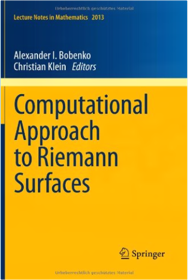


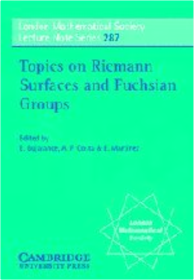


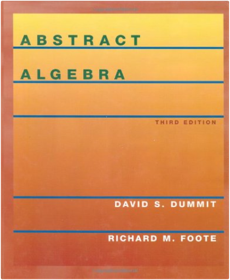
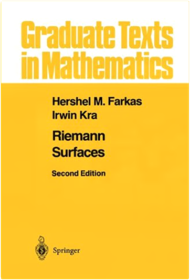
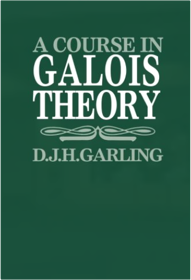
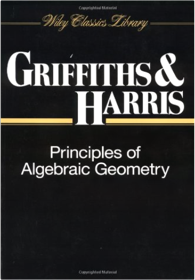

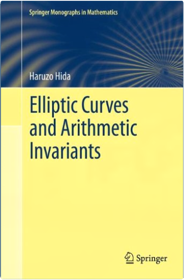
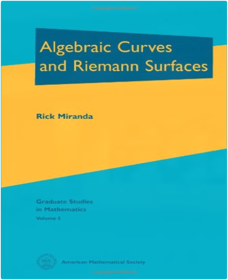
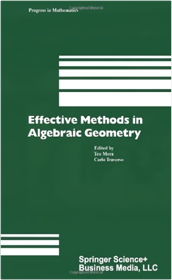
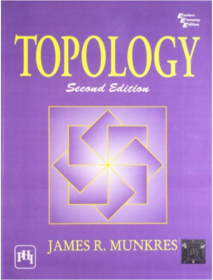
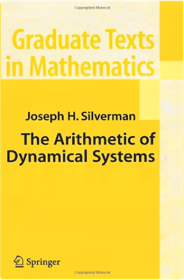

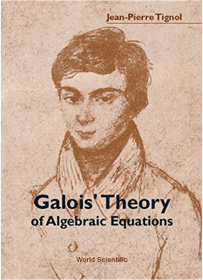



 Made with Delicious Library
Made with Delicious Library